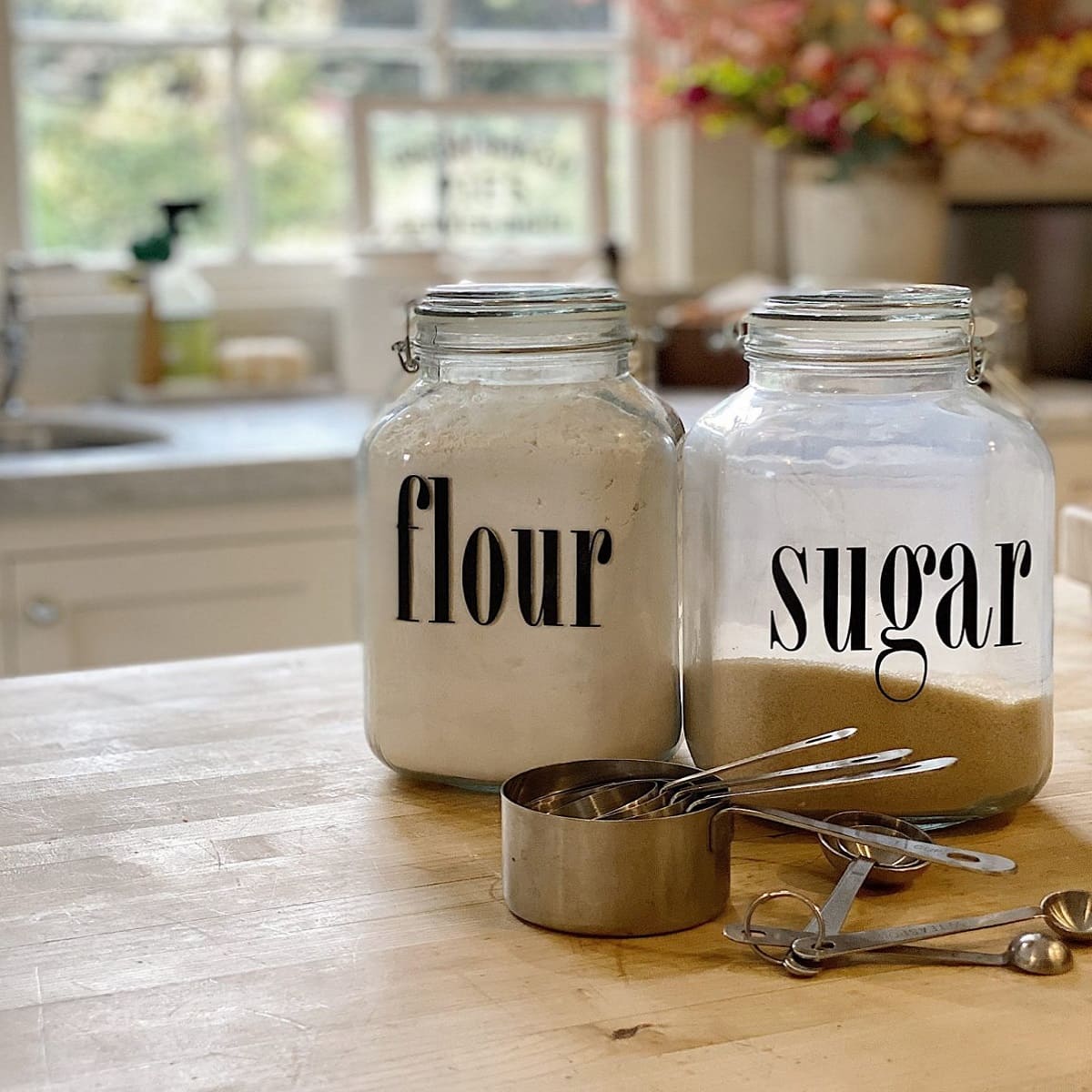

Articles
How To Store Flour And Sugar Long Term
Modified: January 5, 2024
Learn how to store flour and sugar for long term use with these helpful articles. Discover the best methods for preserving their freshness and taste.
(Many of the links in this article redirect to a specific reviewed product. Your purchase of these products through affiliate links helps to generate commission for Storables.com, at no extra cost. Learn more)
Introduction
Properly storing flour and sugar is essential for maintaining their quality and freshness over the long term. Whether you are a home baker, stocking up on supplies, or simply want to ensure that your pantry staples remain in good condition, knowing how to store flour and sugar correctly can make all the difference.
When stored improperly, flour and sugar can become stale, clumpy, and infested with pests. However, by following a few simple guidelines and investing in the right containers, you can ensure that your flour and sugar stay fresh for extended periods of time.
In this article, we will discuss the factors you need to consider for proper storage, recommend containers that are suitable for storing flour and sugar, and provide step-by-step instructions on how to store them long term. So, let’s dive in and learn how to keep these pantry staples in their best condition.
Key Takeaways:
- Proper storage of flour and sugar is crucial for maintaining their freshness and quality. Consider factors like moisture, air exposure, temperature, and light protection to create an optimal storage environment.
- Choose suitable containers like airtight canisters, sealable bags, metal canisters, or glass jars with clamp lids for long-term storage. Follow steps like starting with fresh ingredients, labeling containers, and storing in a cool, dark place to ensure their longevity.
Read more: How To Store Flour Long Term
Factors to Consider for Proper Storage
When it comes to storing flour and sugar, several factors need to be taken into consideration to ensure their longevity and quality. Understanding these factors will help you make informed decisions about storage methods and containers. Let’s explore these factors:
1. Moisture Levels
Moisture is the enemy when it comes to storing flour and sugar. Both flour and sugar have a tendency to absorb moisture from their surroundings, which can lead to spoilage and the development of clumps. It is important to store them in a dry environment to avoid any unwanted moisture contamination.
2. Air Exposure
Exposure to air can cause both flour and sugar to become stale and lose their freshness. Oxygen in the air can react with the components of these pantry staples, resulting in off-flavors and decreased quality. Minimizing air exposure is crucial for long-term storage.
3. Temperature
The temperature at which you store flour and sugar can greatly impact their shelf life. Both flour and sugar should be stored in a cool and stable temperature environment. Avoid exposing them to extreme heat or cold, as it can affect their texture, flavor, and overall quality.
Read more: How To Store Sugar Long Term
4. Light Protection
Exposure to light can cause both flour and sugar to deteriorate in quality. UV rays in sunlight can degrade the components of these pantry staples, leading to discoloration and off-putting flavors. It is important to store them in opaque containers or in a dark cupboard to protect them from light exposure.
By taking these factors into account, you can ensure the proper storage conditions for your flour and sugar, helping them stay fresh and ready to use whenever you need them.
Recommended Containers for Flour Storage
Choosing the right containers for storing flour is vital to prevent moisture absorption, maintain freshness, and avoid pests. Here are some recommended containers for flour storage:
1. Airtight Canisters or Jars
Airtight canisters or jars are excellent choices for flour storage. They provide a secure seal that helps keep out moisture and air, preserving the quality and freshness of the flour. Look for containers made from materials such as glass or food-grade plastic that are specifically designed to be airtight.
2. Food Storage Bags
Food storage bags can be a convenient option for storing flour, especially if you need to store larger quantities. Opt for thick, heavy-duty bags that are designed for long-term storage. Make sure to squeeze out as much air as possible from the bag before sealing to minimize air exposure.
Read more: How To Store Flour Long Term In Buckets
3. Plastic Containers with Tight-Fitting Lids
Plastic containers with tight-fitting lids are another practical choice for flour storage. Look for containers that are made of food-grade plastic and have airtight seals. These containers are usually available in different sizes, allowing you to store various amounts of flour according to your needs.
4. Metal Canisters
Metal canisters are not only durable but also provide great protection against moisture and pests. Look for canisters made of stainless steel or tin with a tight-fitting lid. Ensure that the interior of the canisters is food-safe and free from any coatings that may interact with the flour.
Remember, regardless of the container you choose, it is important to label it with the type of flour and the date of storage. This will help you keep track of the freshness and quality of your stored flour.
By selecting the right containers, you can ensure that your flour remains fresh, dry, and free from any contaminants, ready to be used in your favorite recipes whenever you need it.
Recommended Containers for Sugar Storage
Properly storing sugar is essential to prevent clumping, moisture absorption, and the presence of insects or pests. Here are some recommended containers for sugar storage:
1. Airtight Containers or Jars
Using airtight containers or jars is crucial for sugar storage. These containers provide an effective seal that prevents moisture from entering, keeping the sugar dry and free from clumps. Look for containers made of glass or food-grade plastic that have airtight lids.
Read more: How To Store White Flour Long-Term
2. Sealable Plastic Bags
Sealable plastic bags are a practical option for storing sugar, especially if you have limited space or need to store different quantities. Choose thick, heavy-duty bags that are specifically designed for long-term food storage. Squeeze out any excess air before sealing the bags to minimize exposure to oxygen.
3. Metal Canisters with Tight-Fitting Lids
Metal canisters with tight-fitting lids are a durable and protective option for storing sugar. Look for canisters made of stainless steel or tin, which offer excellent protection against moisture and pests. Ensure that the interior of the canisters is food-safe and free from any coatings that may affect the quality of the sugar.
4. Glass Jars with Clamp Lids
Glass jars with clamp lids are not only visually appealing but also provide a reliable way to store sugar. These jars have an airtight seal that helps keep out moisture and maintains the sugar’s freshness for a longer period of time. Choose jars with thick glass and sturdy clamp lids for optimal storage.
Regardless of the container you choose, remember to label it with the type of sugar and the date of storage. This will help you keep track of its freshness and quality over time.
By using these recommended containers for sugar storage, you can ensure that your sugar remains free from clumps, moisture, and pests, ready to add sweetness to your favorite recipes whenever you need it.
Steps to Store Flour and Sugar Long Term
Follow these simple steps to store flour and sugar for extended periods of time while maintaining their quality and freshness:
Read more: How To Store Bulk Flour Long-Term
1. Start with Fresh and Dry Ingredients
Ensure that the flour and sugar you are storing are fresh and free from any signs of spoilage. It is important to use dry ingredients to prevent moisture contamination during storage.
2. Choose Suitable Containers
Select airtight containers or jars that are specifically designed for long-term food storage. Make sure they are clean, dry, and free from any residual odors that could affect the quality of the flour and sugar.
3. Clean and Dry the Containers
Thoroughly clean and dry the containers before filling them with flour or sugar. This helps prevent any potential contamination and ensures a clean storage environment.
4. Label the Containers
Label each container with the type of flour or sugar and the date of storage. This will help you keep track of the freshness and use them in a first-in, first-out basis.
Read more: How To Store Flour And Sugar
5. Fill the Containers
Pour the flour or sugar into the containers, leaving some headspace at the top for expansion. Be careful not to pack the flour too tightly, as it may lead to clumping. Seal the containers tightly to prevent any air or moisture from entering.
6. Store in a Cool, Dry, and Dark Place
Find a cool and dry location in your pantry or cupboard to store the containers. Avoid areas that are prone to temperature fluctuations or excessive humidity. Shield the containers from direct sunlight to preserve their quality.
7. Check for Freshness Regularly
Periodically check the stored flour and sugar for any signs of spoilage, such as mold, insects, or off odors. If you notice any issues, discard the affected portion and transfer the remaining contents to a new container.
By following these steps, you can ensure that your flour and sugar stay fresh, dry, and ready to use for an extended period of time, providing you with reliable pantry staples for all your baking and cooking needs.
Final Tips for Flour and Sugar Storage
Here are some additional tips to ensure optimal storage and maintain the quality of your flour and sugar:
Read more: How To Store Powdered Sugar Long Term
1. Store in Bulk
If you have the space and consume flour and sugar frequently, consider buying in bulk. This can help you save money and reduce the frequency of restocking, as long as you have suitable containers for long-term storage.
2. Keep Away from Strong Odors
Store flour and sugar away from strong-smelling ingredients like spices, onions, or garlic. These odors can seep into the containers and impact the flavor and freshness of your flour and sugar.
3. Rotate Stock Regularly
Rotate your stock by using the oldest stored flour and sugar first. This practice, known as the first-in, first-out (FIFO) method, helps ensure that you are utilizing the oldest products to maintain their freshness and prevent waste.
4. Take Proper Pest Prevention Measures
Pests are attracted to food sources like flour and sugar. To prevent infestation, consider using pest-proof containers or adding pest deterrents such as bay leaves or airtight insect-proof lids to your storage containers.
Read more: How To Store Bread Flour Long Term
5. Avoid Freezing Flour
While freezing can prolong the shelf life of many food items, it is not recommended for flour. Freezing can alter the texture and moisture content of flour, leading to clumping and deterioration in quality.
6. Keep an Eye on the Expiry Dates
Flour and sugar, just like any other food product, have expiry dates. Always check the expiration dates on the packaging and try to use them before they expire. Even though they can still be safe to consume after the expiration date, the quality may deteriorate.
By following these final tips, you can ensure that your flour and sugar remain fresh, flavorful, and ready to use whenever you need them. Proper storage will not only save you money but also guarantee the best results in your culinary endeavors.
Conclusion
Properly storing flour and sugar is paramount for maintaining their freshness and quality over an extended period. By considering factors such as moisture levels, air exposure, temperature, and light protection, you can create an optimal storage environment for these pantry staples.
When it comes to choosing containers, opt for airtight canisters or jars, sealable plastic bags, metal canisters with tight-fitting lids, or glass jars with clamp lids for flour storage. For sugar, airtight containers, sealable bags, metal canisters, or glass jars with clamp lids help preserve its texture and flavor.
To store flour and sugar long term, start with fresh and dry ingredients, clean and dry the containers, label them properly, fill them without packing too tightly, and store them in a cool, dry, and dark place. Regularly check for freshness and discard any contaminated portion.
In conclusion, proper storage of flour and sugar is essential to maintain their quality for your baking and cooking needs. By following the recommended storage methods and taking precautions, you can ensure that your flour and sugar remain fresh, free from clumps, and free from pests.
By implementing these storage guidelines, you can confidently stock up on flour and sugar, knowing that they will maintain their quality and be readily available whenever you need them. So, go ahead and organize your pantry with these storage tips, and enjoy the benefits of having fresh ingredients at your fingertips.
Frequently Asked Questions about How To Store Flour And Sugar Long Term
Was this page helpful?
At Storables.com, we guarantee accurate and reliable information. Our content, validated by Expert Board Contributors, is crafted following stringent Editorial Policies. We're committed to providing you with well-researched, expert-backed insights for all your informational needs.
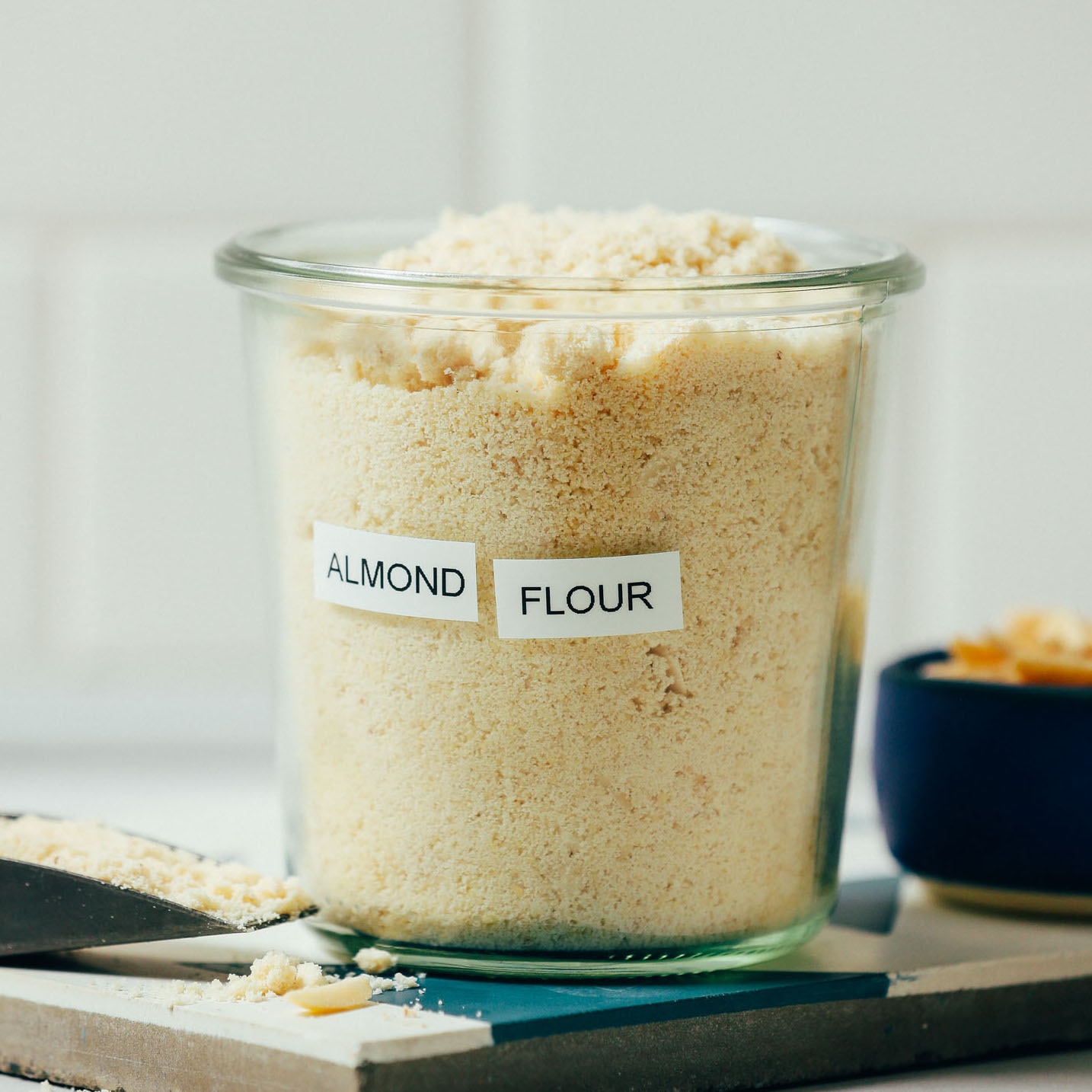
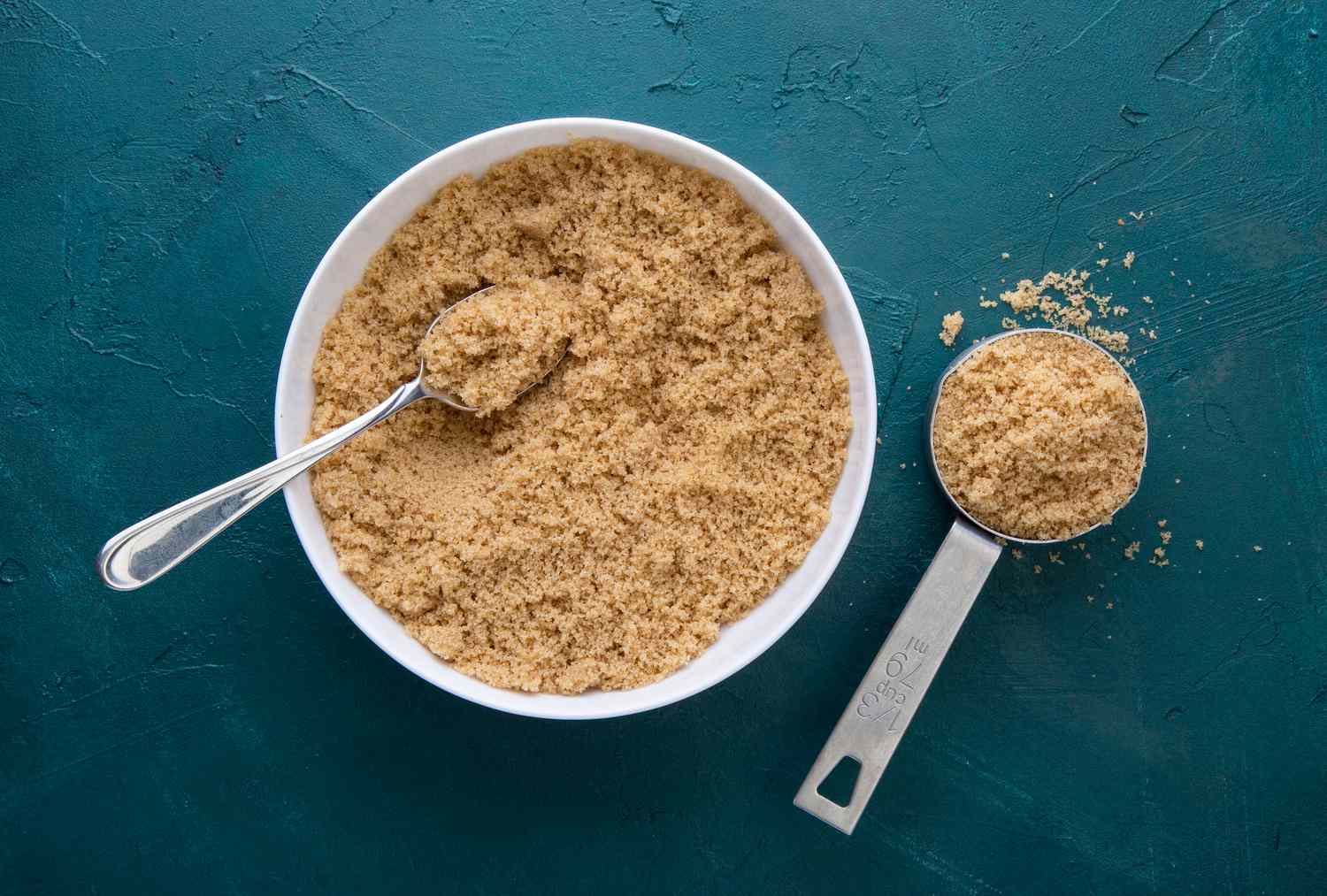
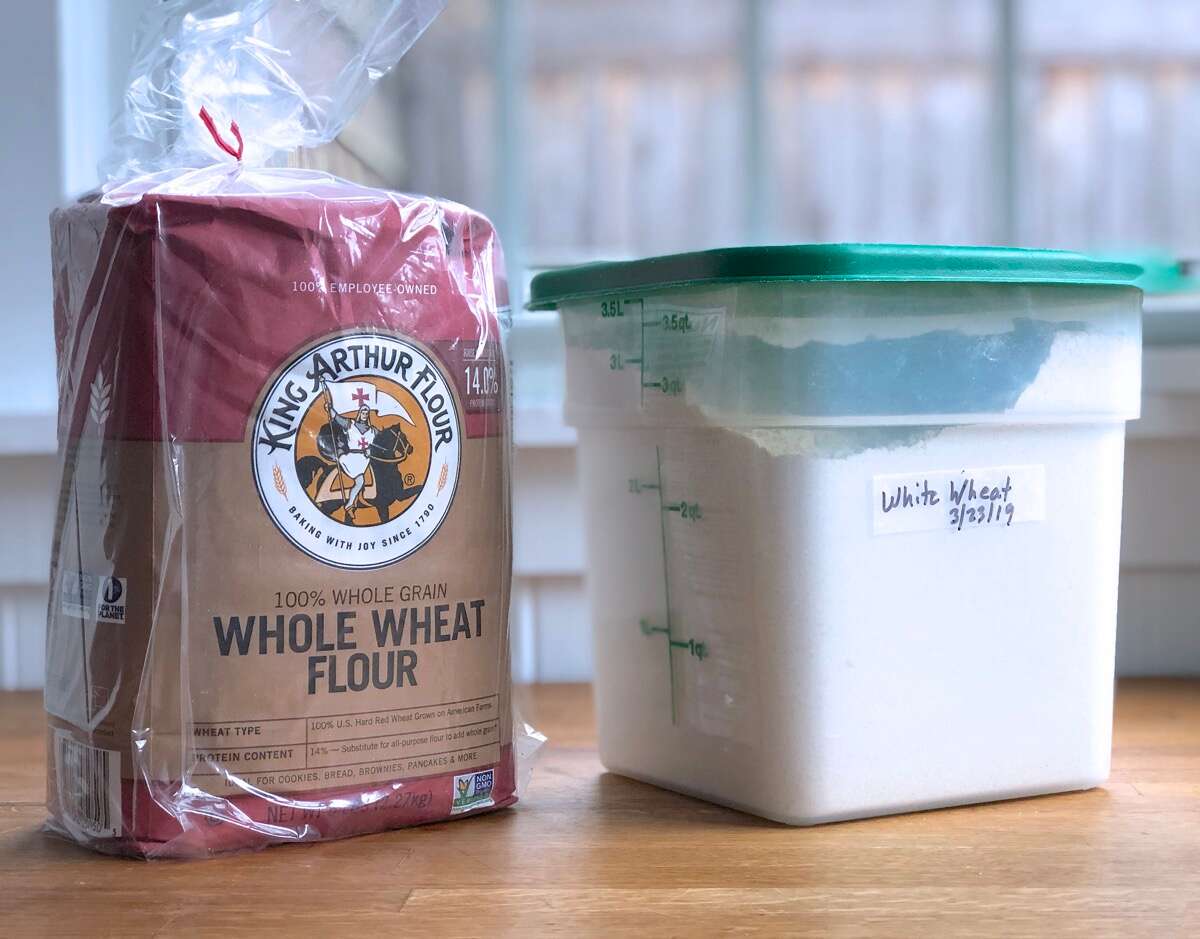
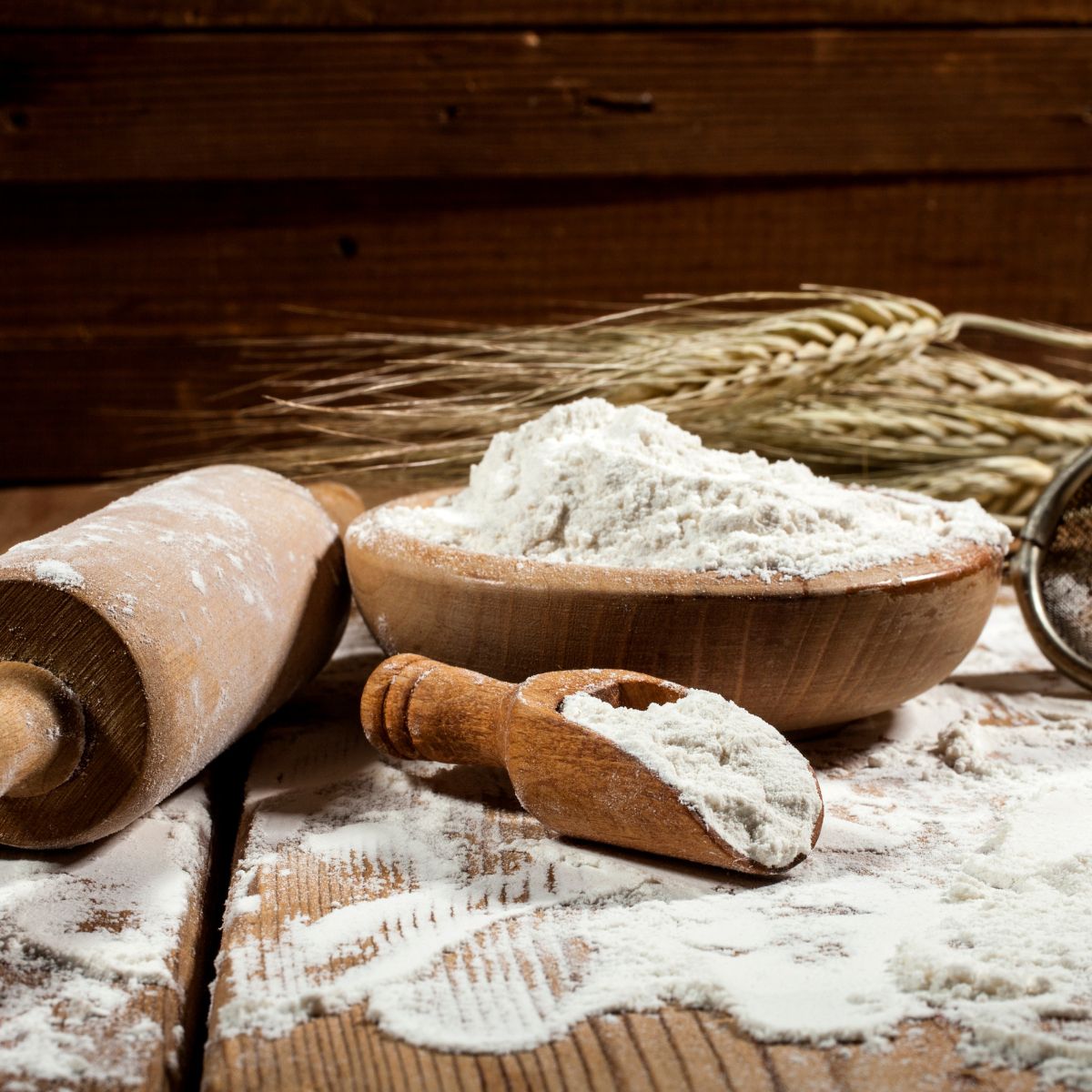
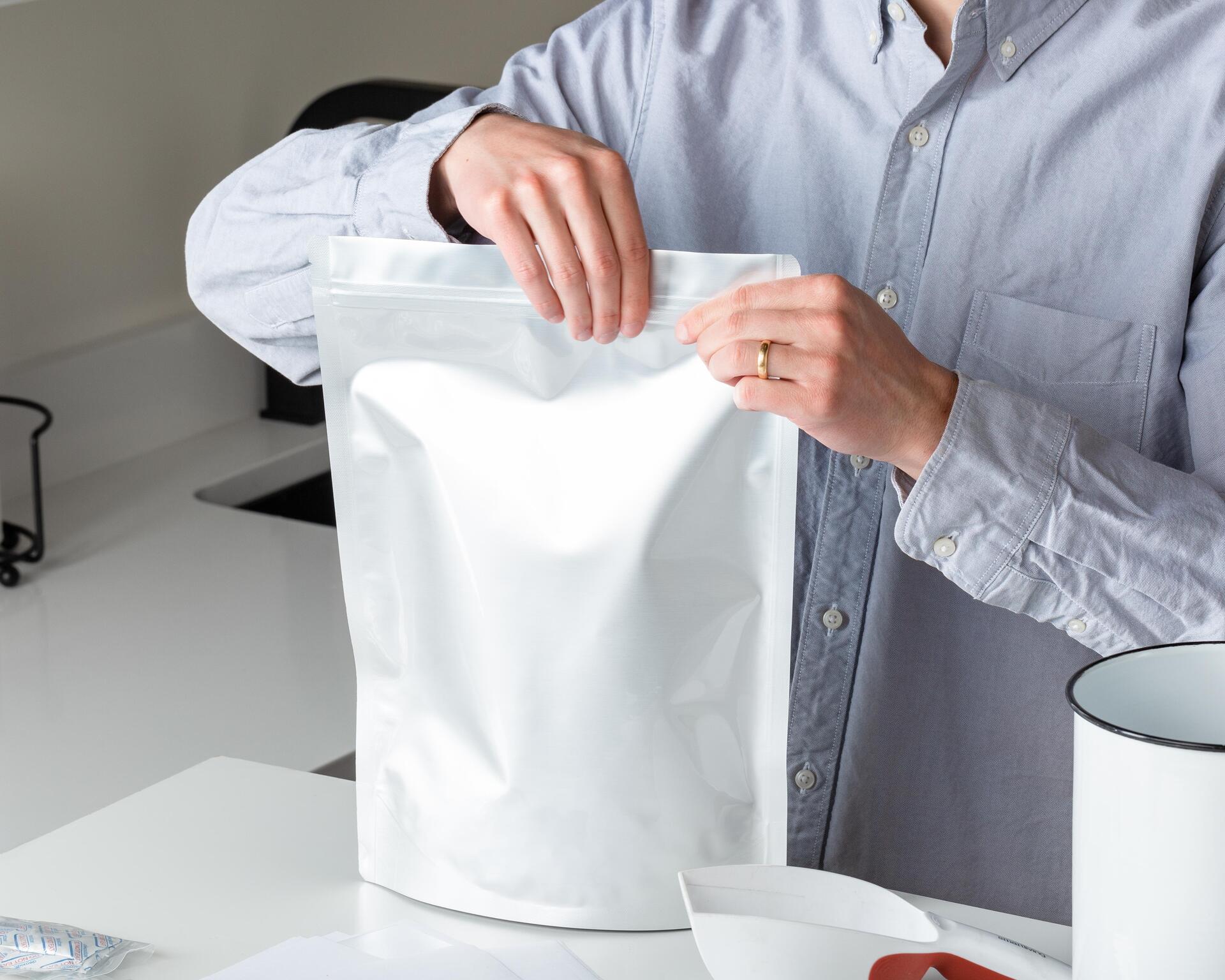
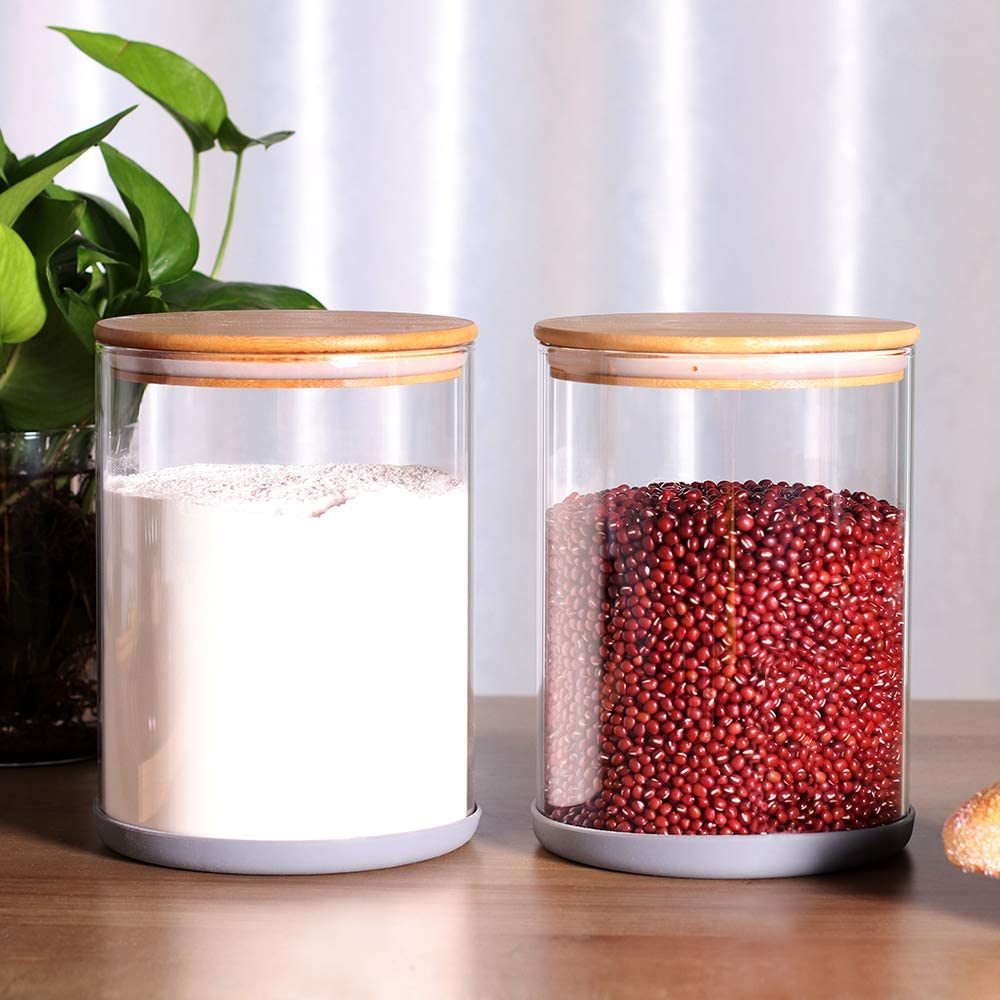
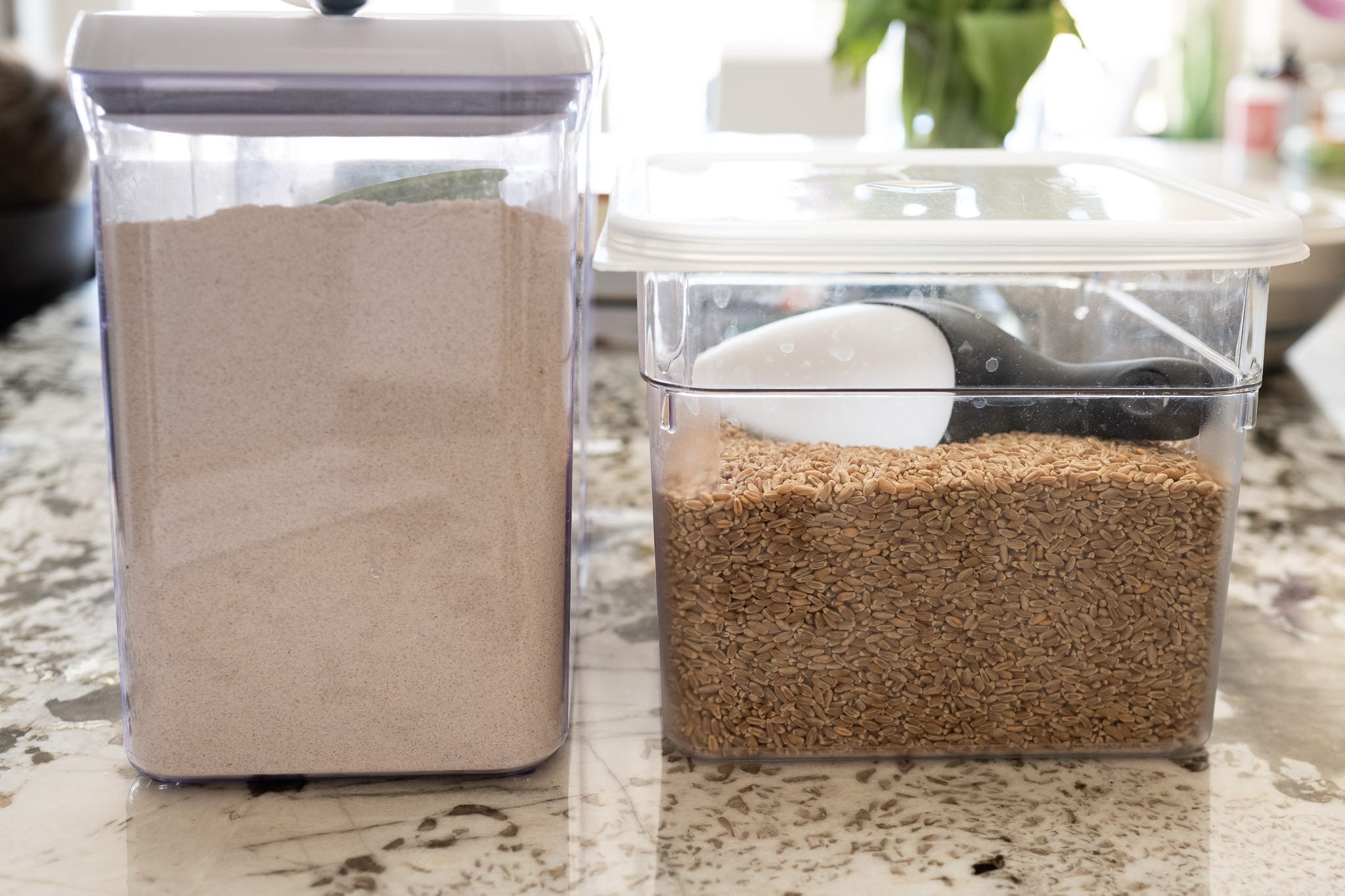
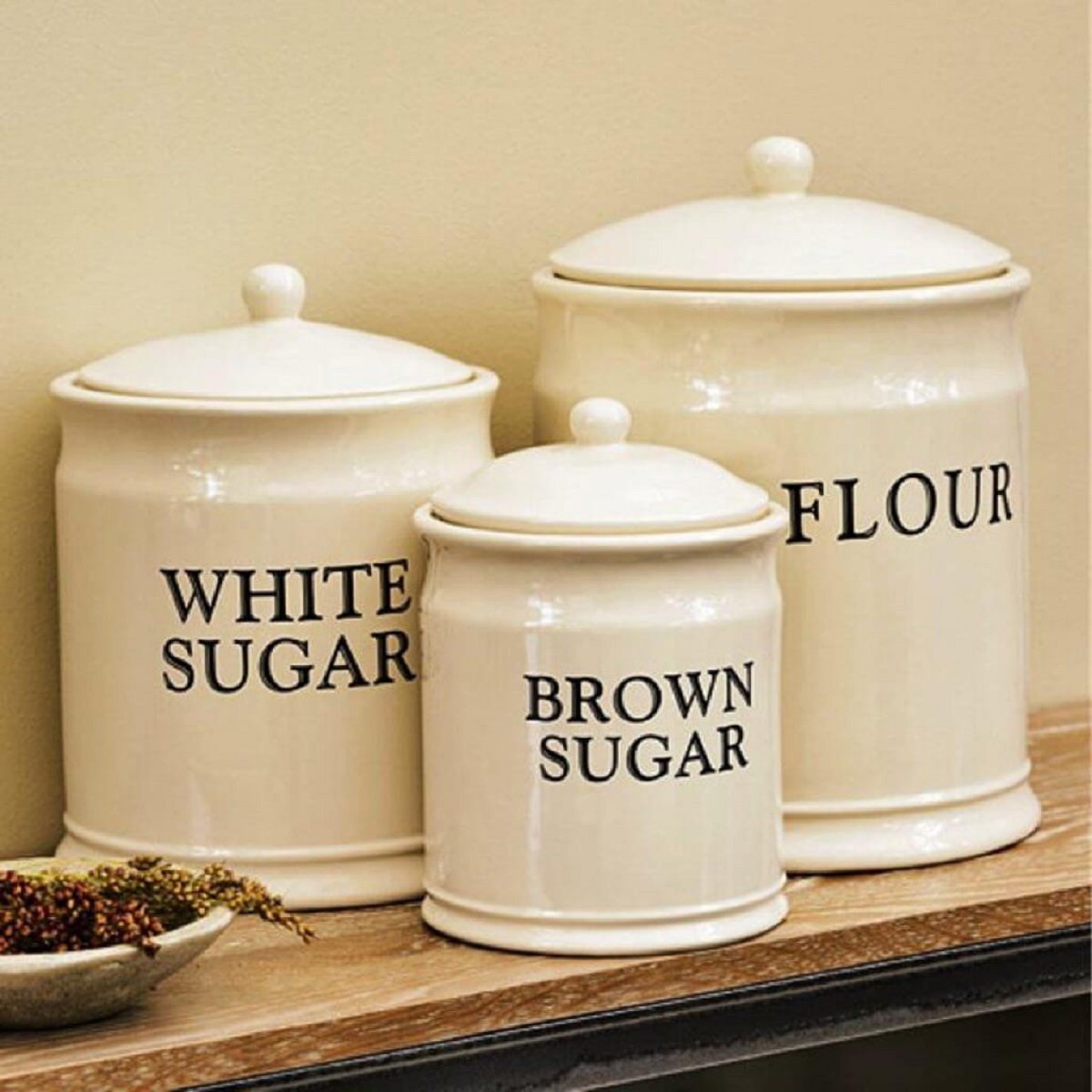

0 thoughts on “How To Store Flour And Sugar Long Term”